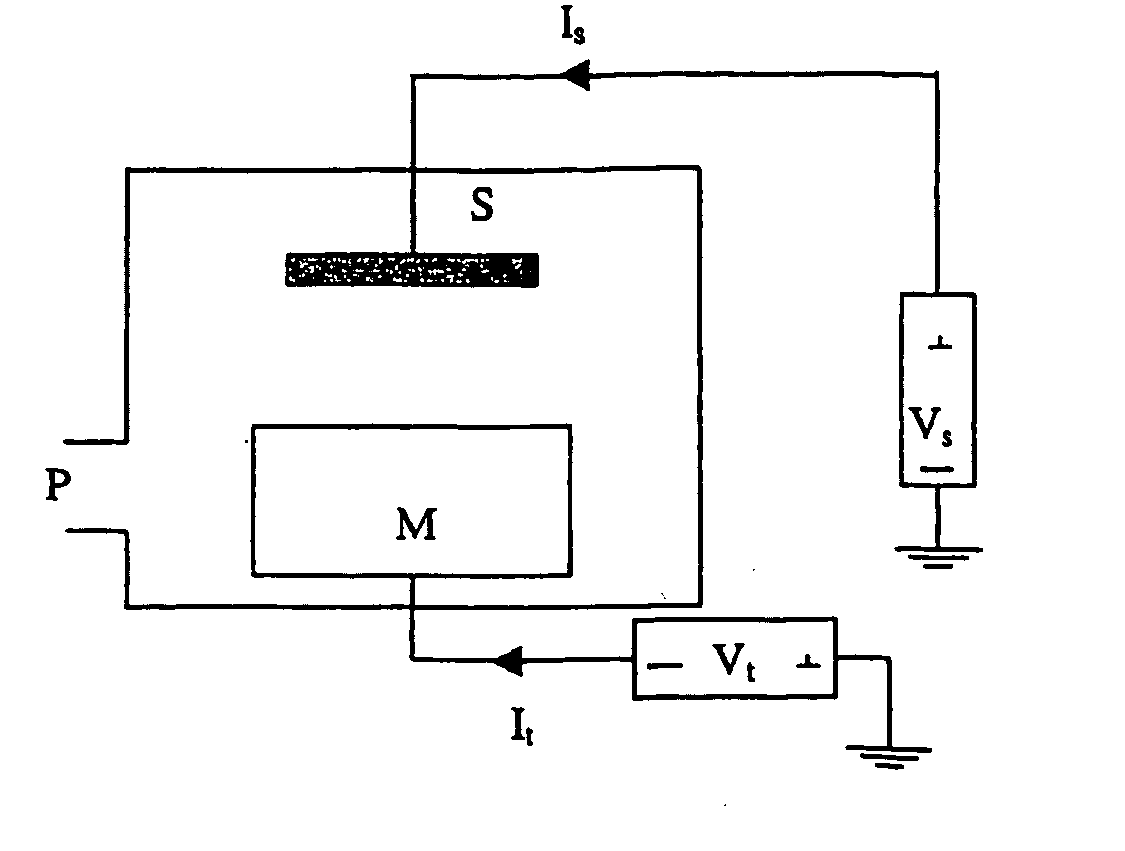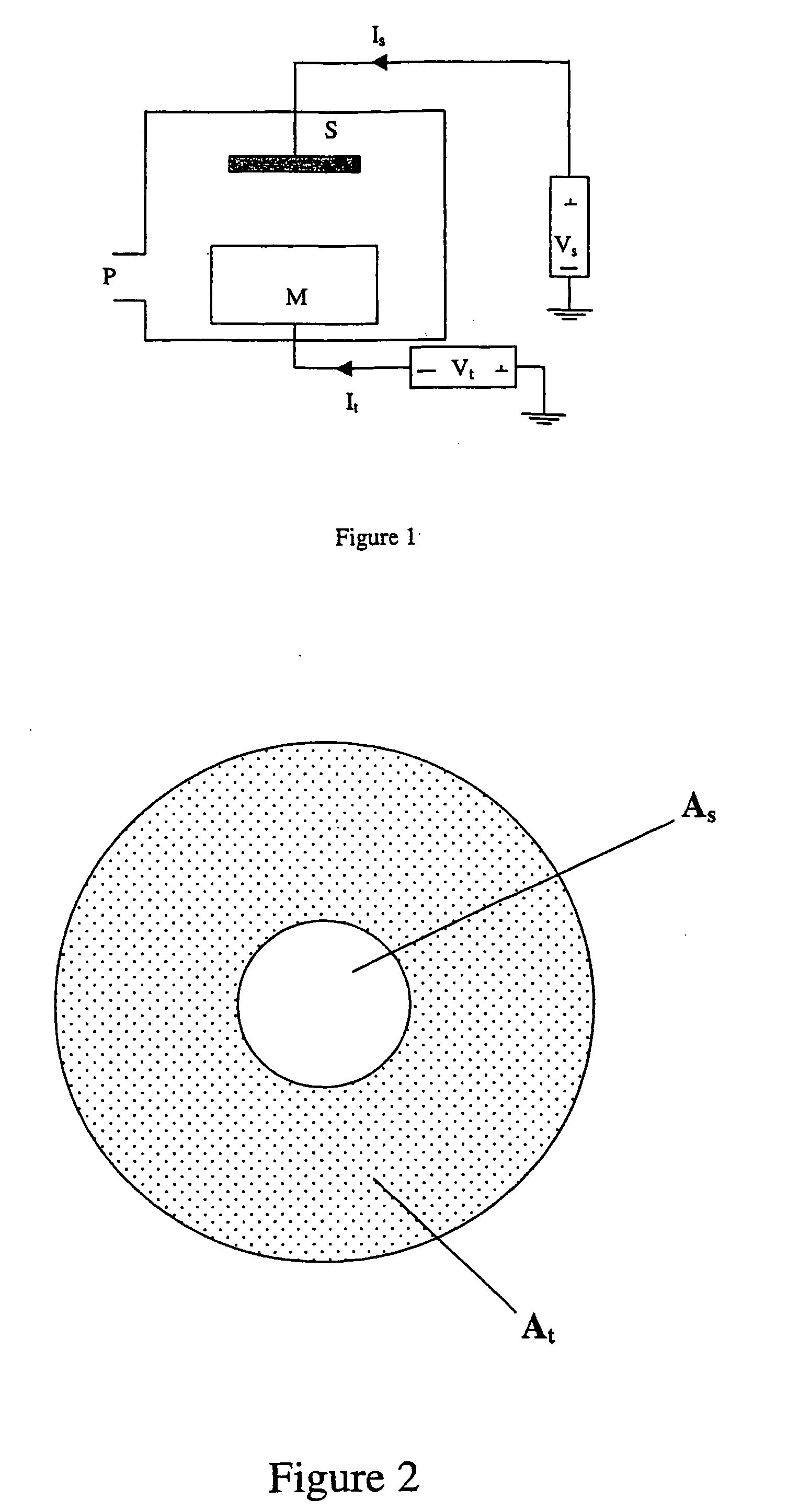Method of coating a cutting tool
a cutting tool and coating technology, applied in the field of coating a cutting tool, can solve the problems of contaminated surface, renucleation tendency, industrial use of thicker pvd men- and/or me/sub>n-layers on cutting tools, etc., and achieve the effect of reducing compressive residual stress
- Summary
- Abstract
- Description
- Claims
- Application Information
AI Technical Summary
Benefits of technology
Problems solved by technology
Method used
Image
Examples
example 1
[0042] (Ti,Al)N-layers were deposited in a deposition system equipped with a rectangular dc magnetron sputter source with a Ti+Al target (50 at % Ti+50 at % Al) of 318 cm2. The substrate table projected surface area was 20 cm2 positioned at a distance of 5 cm from the target surface.
[0043] Mirror-polished cemented carbide substrates with composition 6 wt % Co and 94 wt % WC were used. The WC grain size was about 1 μm and the hardness was 1650 HV10.
[0044] Before deposition, the substrates were cleaned in an ultrasonic bath of an alkali solution and in alcohol. The substrates were stationarily positioned above the magnetron and resistively heated by an electron beam for 40 min to about 400° C. Immediately after heating, the substrates were argon-ion etched (ion current density 5 mA / cm2) for 30 minutes using a substrate bias of −200V. The subsequent (Ti,Al)N deposition was carried out by reactive magnetron sputtering using a magnetron power of 5 kW, an Ar pressure of 0.3 Pa, a nitrog...
example 2
[0050] In order to determine the N2 flow rate to obtain a stoichiometric ratio between the metallic elements and nitrogen, i.e., (Ti+Al) / N˜1, a test was performed where the N2 flow rate was varied between 10 and 175 sccm. All other deposition data was kept constant, e.g., the magnetron power at 5 kW, the substrate bias at +50V, Ar pressure at 0.25 Pa. The deposition system set-up was the same as in Example 1. The content of Al, Ti and N in the layers was measured using EDS. The results are reported in Table 2 below and show that using the present methods a surprisingly high stability for the N2 flow rate is achieved. In the whole range between 30 sccm and 175 sccm, a stoichiometric composition is obtained, e.g., (Ti+Al) / N is about 1. This is an effect of the high substrate electron current, increasing the dissociation rate of the N2 molecule. No Ar was detected in any of the layers.
TABLE 2Dependence of stoichiometry ratio (Ti + Al) / N on N2 flow rateN2 flow rateTiAlNStoichiometryVa...
example 3
[0051] Cemented carbide cutting tool inserts from Example 1 (the same names of the variants are used) were used in a face milling cutting test, in solid and slotted work piece material, SS2541. The homogeneous cutting test (solid work piece) was made in a 60 mm wide plate and the interrupted cutting test was performed by using three 20 mm wide plates separated by 10 mm, mounted as a package. The cutting data were; vc=250 m / min (homogeneous) and 200 m / min (interrupted), f=0.1 mm / rev and depth of cut=2.5 mm.
TABLE 3Face Milling Cutting TestHomogeneous cutInterrupted cutVariantTool life, mmTool life, mmAPrior art (Ti, Al)N22001500B(Ti, Al)N1700900(Vs = −100 V)DPresent invention28002100(Ti, Al)N(Vs = +50 V)
[0052] This test demonstrates that the variant D shows the best wear resistance, but also surprisingly the best toughness in spite of the thickest coating.
PUM
| Property | Measurement | Unit |
|---|---|---|
| current density | aaaaa | aaaaa |
| current density | aaaaa | aaaaa |
| deposition rate | aaaaa | aaaaa |
Abstract
Description
Claims
Application Information
 Login to View More
Login to View More - R&D
- Intellectual Property
- Life Sciences
- Materials
- Tech Scout
- Unparalleled Data Quality
- Higher Quality Content
- 60% Fewer Hallucinations
Browse by: Latest US Patents, China's latest patents, Technical Efficacy Thesaurus, Application Domain, Technology Topic, Popular Technical Reports.
© 2025 PatSnap. All rights reserved.Legal|Privacy policy|Modern Slavery Act Transparency Statement|Sitemap|About US| Contact US: help@patsnap.com



